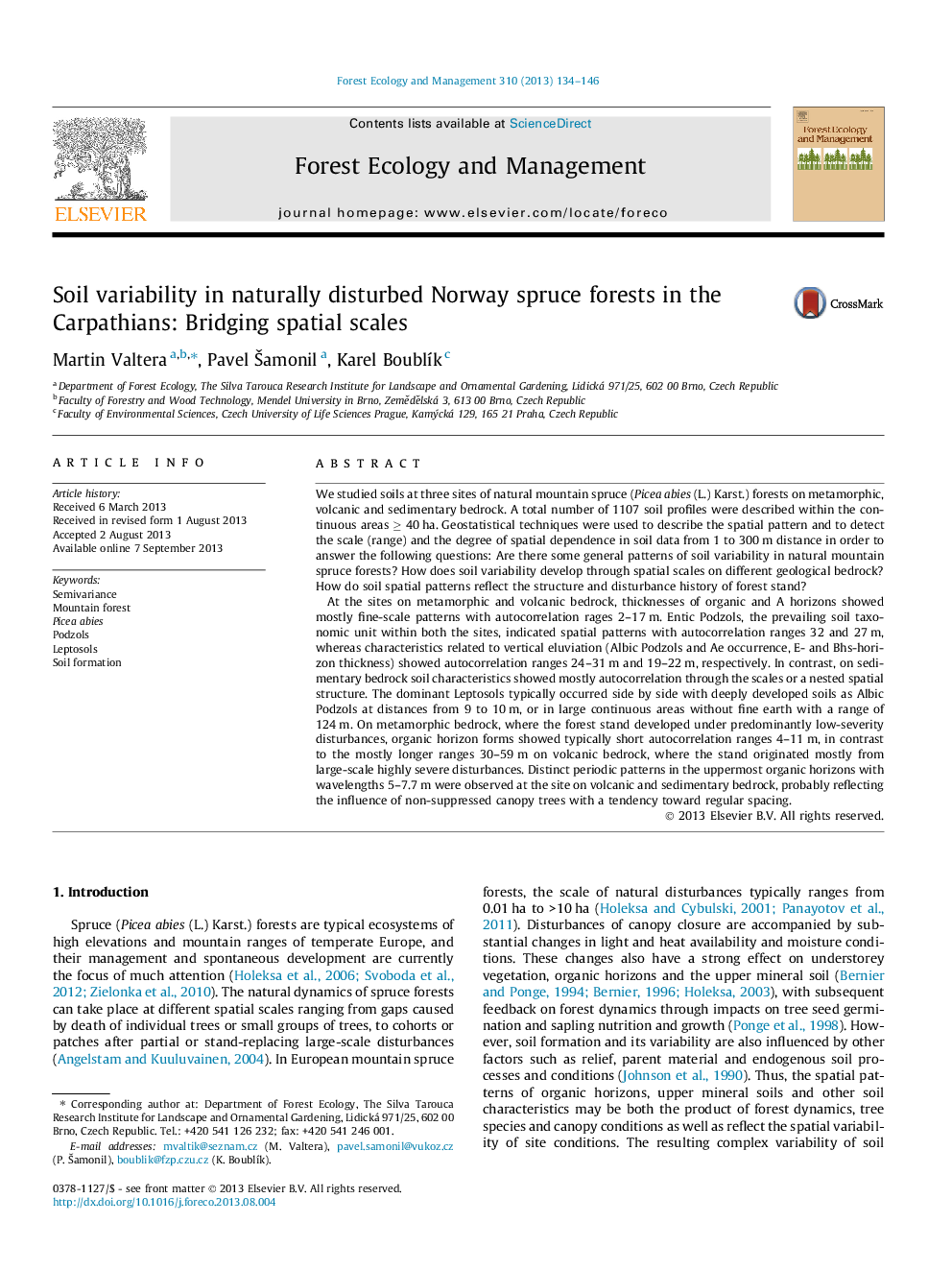| Article ID | Journal | Published Year | Pages | File Type |
|---|---|---|---|---|
| 6543656 | Forest Ecology and Management | 2013 | 13 Pages |
Abstract
At the sites on metamorphic and volcanic bedrock, thicknesses of organic and A horizons showed mostly fine-scale patterns with autocorrelation rages 2-17Â m. Entic Podzols, the prevailing soil taxonomic unit within both the sites, indicated spatial patterns with autocorrelation ranges 32 and 27Â m, whereas characteristics related to vertical eluviation (Albic Podzols and Ae occurrence, E- and Bhs-horizon thickness) showed autocorrelation ranges 24-31Â m and 19-22Â m, respectively. In contrast, on sedimentary bedrock soil characteristics showed mostly autocorrelation through the scales or a nested spatial structure. The dominant Leptosols typically occurred side by side with deeply developed soils as Albic Podzols at distances from 9 to 10Â m, or in large continuous areas without fine earth with a range of 124Â m. On metamorphic bedrock, where the forest stand developed under predominantly low-severity disturbances, organic horizon forms showed typically short autocorrelation ranges 4-11Â m, in contrast to the mostly longer ranges 30-59Â m on volcanic bedrock, where the stand originated mostly from large-scale highly severe disturbances. Distinct periodic patterns in the uppermost organic horizons with wavelengths 5-7.7Â m were observed at the site on volcanic and sedimentary bedrock, probably reflecting the influence of non-suppressed canopy trees with a tendency toward regular spacing.
Related Topics
Life Sciences
Agricultural and Biological Sciences
Ecology, Evolution, Behavior and Systematics
Authors
Martin Valtera, Pavel Å amonil, Karel BoublÃk,
